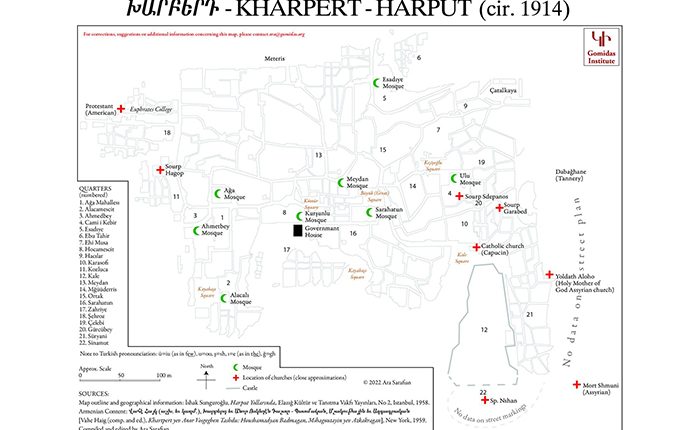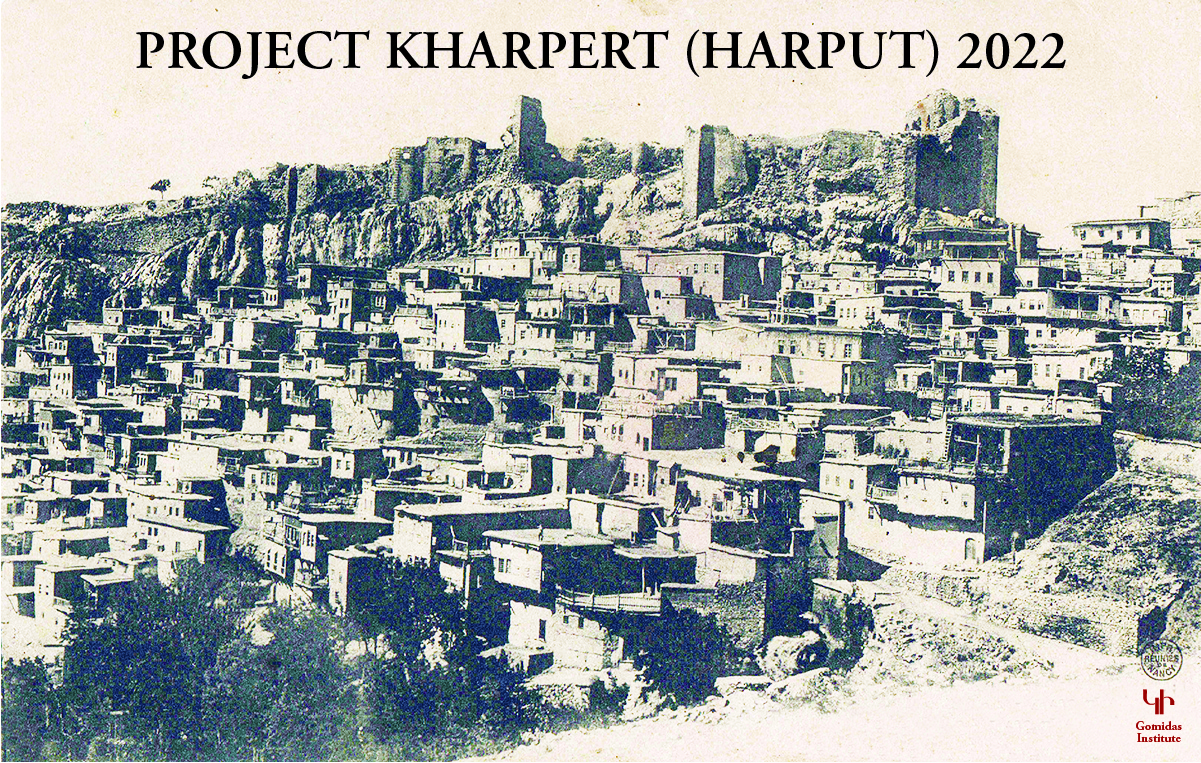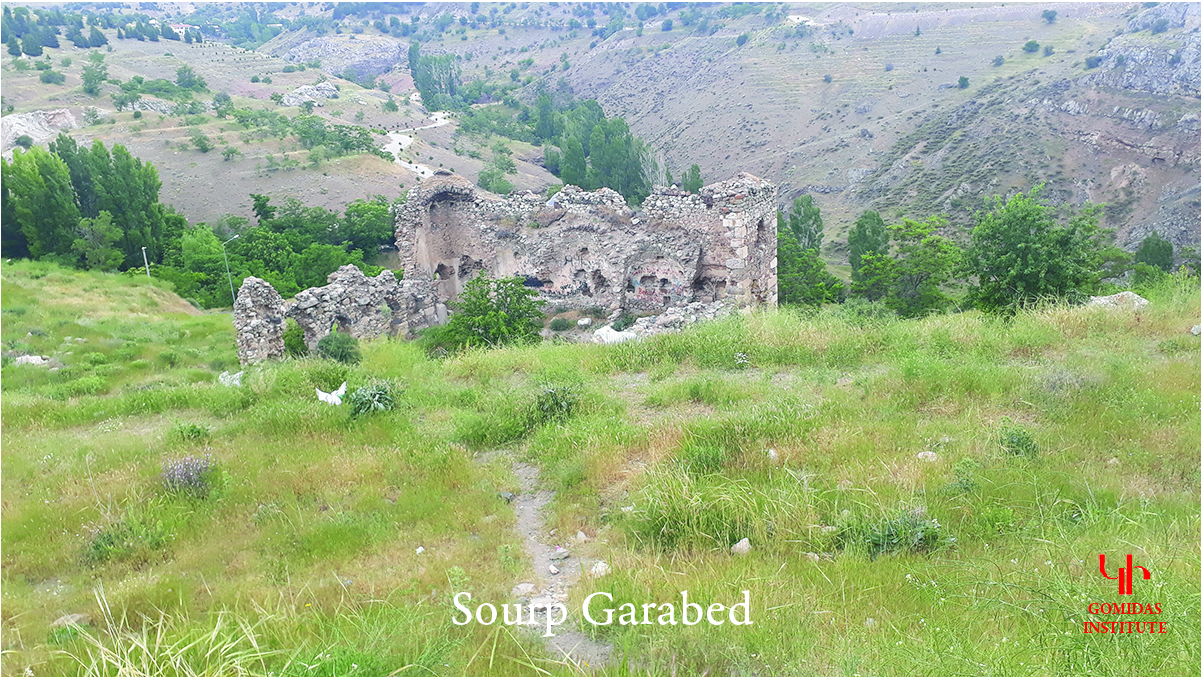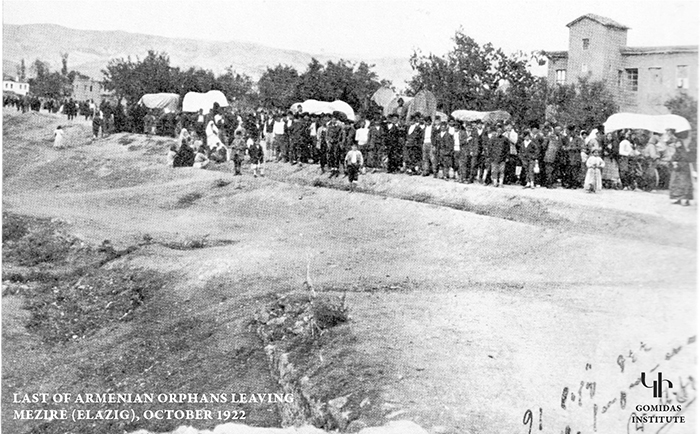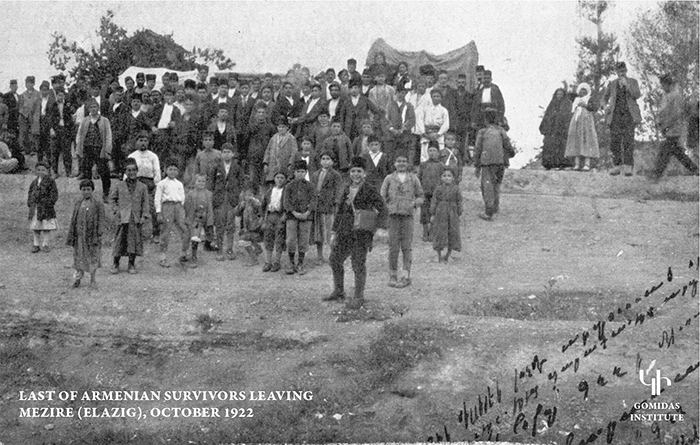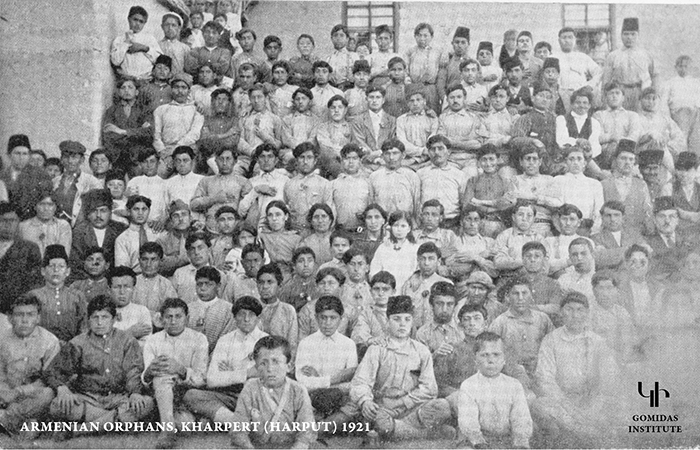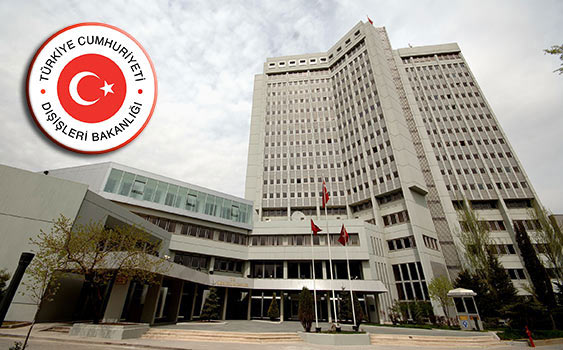Gomidas Institute has announced the release of a historical map of Kharpert city (cir 1914; comp. and ed. Ara Sarafian). This work is primarily based on İshak Sunguroğlu, “Harput Yollarında” (Elazığ Kültür ve Tanıtma Vakfı Yayınları, No 2, Istanbul, 1958), Վահէ Հայկ (աշխ. եւ կազմ.), “Խարբերդ եւ Անոր Ոսկեղէն Դաշտը,” (New York, 1959), as well Ara Sarafian’s fieldwork in the region.
“Historical Map of Kharpert, 1914” is an integrated map that shows Kharpert [Harput] as a multi-cultural city prior to the First World War. According to the 1913 survey of the Armenian Patriarchate of Constantinople, the population of Kharpert consisted of 13,662 people. This figure included 4,248 Armenians (2,888 Apostolic, 225 Catholic, and 1,135 Protestant Armenians), 678 other Christians, and 8,736 Turks. There were an additional 2,807 Kharpertsi Armenians living in the United States and Egypt. The “other Christians” were mostly Assyrians. The Turkish ethnicity of the Muslim population is a problematic category, as many “Turks” were undoubtedly ethnic Kurds and others from the surrounding regions. The survey did not differentiate between the Sunni and Alevi components of the Muslim community, nor did it mention the number of Muslim Kharpertsies living in other parts of the Ottoman Empire and beyond.
This map has been produced as part of the Gomidas Institute’s Project Kharpert 2022. For more information or support, please contact [email protected].
Project Kharpert 2022 initiative in launched, on the 100th anniversary of the final departure of hundreds of Armenian orphans from Kharpert (October 1922). These orphans were the remnants of the Armenian Genocide, who had been collected in the Kharpert region by American missionaries and Armenian church authorities between 1918-22. Most of these orphans were moved to Syria and Lebanon, while others were sent further afield. Thousands of their descendants live across the world today, with major concentrations in the United States, France and Argentina.
Project Kharpert 2022 is an initiative to work with Turkish authorities and civil society, and to publicly recognise the Armenian historical presence in the Kharpert region. While official Turkey may be reluctant to take such steps, there is support for such initiatives among ordinary people in Turkey and abroad.
The immediate focus of Project Kharpert 2022 is to mark the location of Armenian churches in the city. This would be part of a broader project that is already underway in the city today, with the renovation and rebuilding of Kharpert as a touristic centre.
Gomidas Institute has already issued a statement regarding Project Kharpert 2022 and approached the governor of Elazig province and the mayor of Elazig.
Armenian Christians constituted around 40% of the population of Kharpert and its surrounding villages. They wielded significant social and economic influence and contributed to the prosperity of the region. needless to say, they were also subjected to deportation and annihilation of Armenians in 1915.

